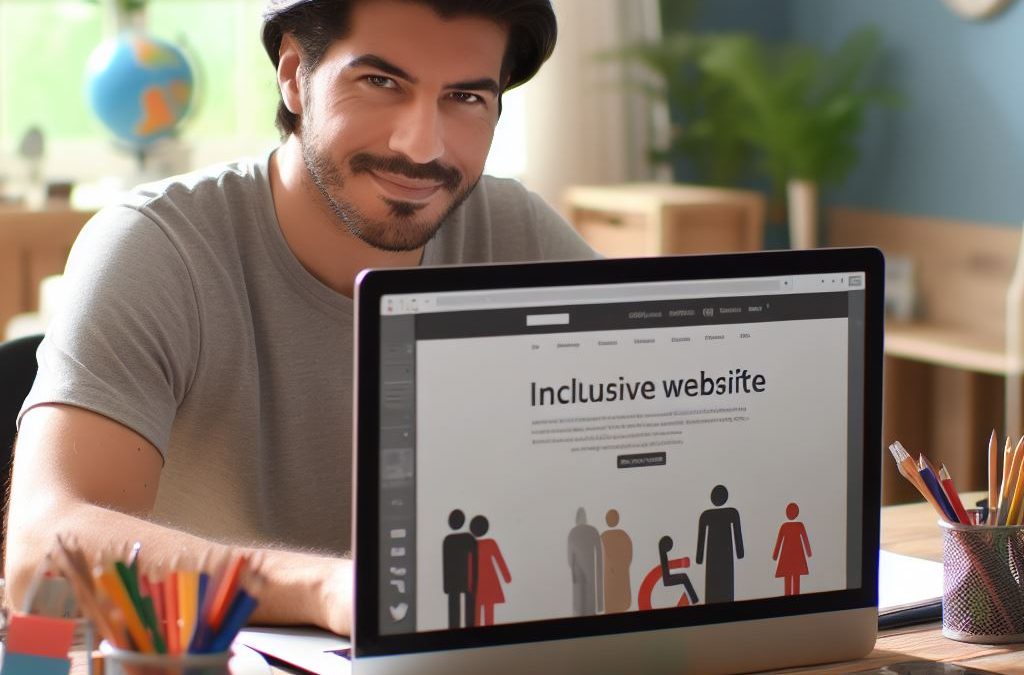
Why It’s Important to Choose a Website Designer that Prioritises CyberSecurity

Cybersecurity is the practice of protecting your business’s digital assets, including data, systems, and networks, from cyber threats such as hacking, data breaches, malware, and phishing attacks. It involves implementing measures to prevent unauthorised access, detect potential threats, and respond effectively to security incidents.
It is like having locks on your doors and windows to keep burglars out of your physical store. It’s about safeguarding your online presence and digital information from cybercriminals who may try to steal sensitive data, disrupt your operations, or cause financial harm.
By investing in cybersecurity measures, such as using strong passwords, keeping software up to date, and training employees on safe online practices, small business owners in Toowoomba can protect their valuable assets, maintain customer trust, and ensure the continued success of their business in today’s digital world.
7 Reasons Why Cyber Security is Important in Website Design
As a small business owner in Toowoomba, understanding the importance of choosing a website designer that prioritises cybersecurity is crucial for protecting your business, customers, and reputation. Here’s why:
1.Data Protection
A website designer who prioritizes cybersecurity will implement measures to protect sensitive data such as customer information, payment details, and business intelligence. This ensures that your business complies with data protection regulations and builds trust with customers.
2. Risk Mitigation
Cybersecurity-focused website designers understand the risks associated with web development, including vulnerabilities in code, server configurations, and third-party integrations. By proactively addressing these risks, they minimize the likelihood of security breaches and data leaks that could harm your business.
3. Business Continuity
Cyber attacks and security breaches can disrupt your business operations, leading to downtime, financial losses, and damage to your reputation. Working with a website designer who prioritizes cybersecurity helps mitigate these risks and ensures business continuity by safeguarding against potential threats.
4. Reputation Management
A security incident such as a data breach can severely damage your business’s reputation and erode customer trust. By choosing a website designer in Toowoomba with a strong focus on cybersecurity, you demonstrate your commitment to protecting customer data and maintaining a secure online environment, enhancing your reputation in the marketplace.
5. Legal and Regulatory Compliance
Cybersecurity regulations such as the General Data Protection Regulation (GDPR) impose strict requirements on businesses to protect customer data. Partnering with a website designer who understands these regulations and implements appropriate security measures helps ensure compliance and avoids costly penalties.
6. Long-Term Cost Savings
Investing in cybersecurity during the website design phase may require upfront costs, but it can result in significant long-term savings by preventing security incidents that could incur fines, legal fees, and remediation costs. Additionally, a secure website reduces the likelihood of costly downtime and loss of revenue due to cyber attacks.
7. Customer Trust and Loyalty
In today’s digital age, customers expect businesses to prioritize cybersecurity and protect their personal information. By partnering with a website designer who prioritizes cybersecurity, you demonstrate your commitment to customer privacy and security, fostering trust and loyalty among your target audience.
Case Studies of Cyber Security Compromises Resulting to Business Loss
Here are three examples of companies whose business operations were disrupted due to cybersecurity compromises:
Equifax
In 2017, Equifax, one of the largest credit reporting agencies in the world, experienced a massive data breach that exposed sensitive personal information of over 147 million consumers. The breach occurred due to a vulnerability in Equifax’s website software, which hackers exploited to gain access to the company’s systems. The incident led to significant disruptions in Equifax’s operations, financial losses, legal challenges, and damage to its reputation.
Sony Pictures Entertainment:
In 2014, Sony Pictures Entertainment suffered a cyber attack by a group calling themselves the Guardians of Peace (GOP). The attackers breached Sony’s network, stole confidential data, and leaked sensitive information, including unreleased films, executive emails, and employee personal information. The cyber attack disrupted Sony’s business operations, caused significant financial losses, and resulted in reputational damage for the company.
Maersk:
In 2017, Maersk, the world’s largest shipping company, fell victim to the NotPetya ransomware attack, which spread rapidly across its global network. The ransomware encrypted data on Maersk’s computers, disrupting its operations and forcing the company to shut down critical systems, including its container terminals and booking systems. The cyber attack resulted in substantial financial losses for Maersk, estimated to be in the hundreds of millions of dollars, and caused widespread disruptions in global shipping operations.
These examples highlight the serious impact that cybersecurity compromises can have on businesses, including financial losses, operational disruptions, and damage to reputation. It underscores the importance of investing in robust cybersecurity measures to mitigate risks and protect against cyber threats.
What We Have To Say
As a small business owner, you should be concerned about cyber attacks because they can lead to financial losses, reputational damage, legal consequences, operational disruptions, and supply chain risks. Hackers can steal sensitive financial information, disrupt your operations, and damage your reputation by compromising customer data. This can result in loss of revenue, negative publicity, and legal liabilities due to non-compliance with data protection regulations.
Cyber attacks can also disrupt your business operations, making it difficult to serve customers and fulfill orders, potentially impacting your relationships with suppliers and partners. Therefore, it’s crucial for small business owners to prioritize cybersecurity and implement measures to protect their business assets and customer data from cyber threats.
Here at M Business, value your website’s security. That’s why we have chosen a reliable Australian hosting service to reduce vulnerability. Our support team is well-trained and readily available to respond to any attacks, should you even encounter one.
So what are you waiting for? Why consider a website designer without any knowledge of cybersecurity. Talk to Mike and discuss your website design without worrying about your online security.






